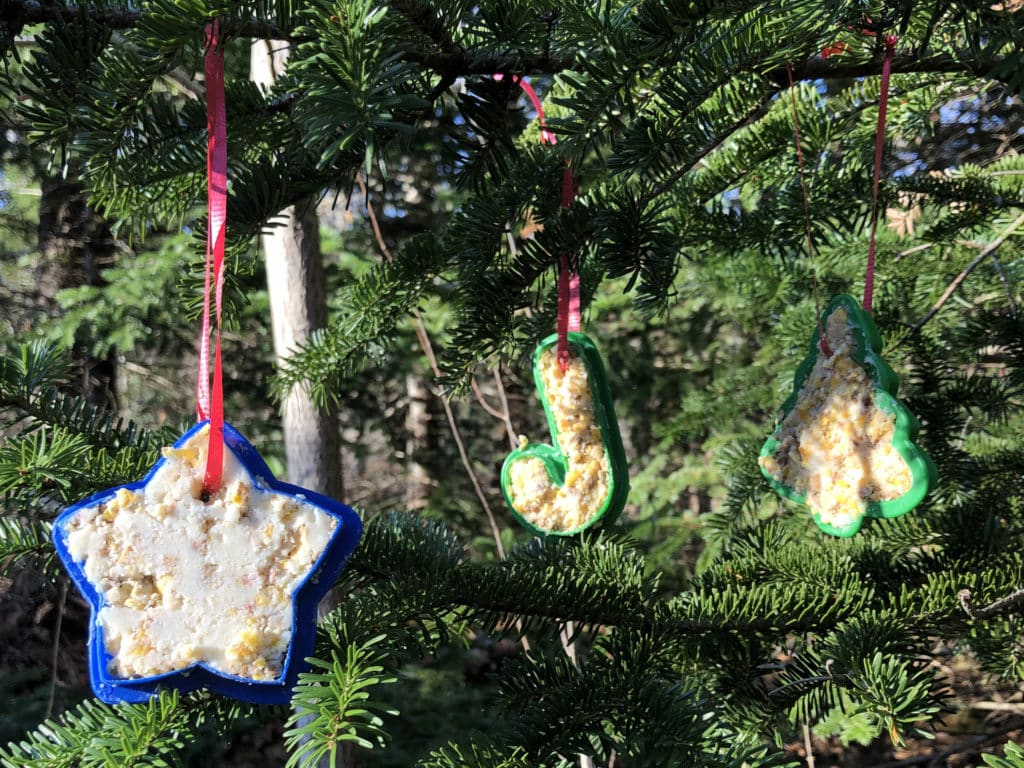
You’re invited to bring a wildlife-friendly ornament to hang on our very own Night Tree at Fields Pond Audubon Center, and enjoy the classic children’s book, Night Tree, by Eve Bunting on a book walk along the trail behind the Nature Center. The walk is up now through the end of the year.
Some bird-friendly ornament suggestions include:
- Pine cone feeders covered with peanut butter and birdseed
- Small suet balls or suet cakes in holiday shapes, or small mesh bags of suet.
- Strings of fruits such as apple, pear, or orange chunks, raisins, or cranberries
- Dried sunflower heads or stalks of dried millet or other grain
Bangor Daily News outdoors reporter Aislinn Sarnacki interviewed Staff Naturalist Doug Hitchcox for a recent article about making wildlife-friendly ornaments. Here are a few excerpts from the article:
“I encourage people to be as natural [with their materials] as possible,” said Doug Hitchcox, staff naturalist at Maine Audubon. “Use things that we already put out like bird seed and suet, but find creative ways to make them into decorations.”
That doesn’t mean you can’t use a little popcorn, he said. But offer it in moderation. Popcorn doesn’t offer wildlife much nutrition or fat, which is what animals need to make it through Maine’s harsh winter.
It’s also important to monitor your decorated tree if it’s close to your home, just in case it’s attracting wildlife like raccoons that you’d rather not be attracting. You may also choose to trash the edible decor if things are getting out of hand. But in general, because a holiday tree is temporary, it’s less likely to habituate wildlife than a long-term food source like a bird feeder that’s filled consistently throughout the year.
Hitchcox also suggested you keep an eye on your edible ornaments during warm days, when some of the food could spoil. Bacteria and mold can cause major problems for wildlife.
Another tip: Decorate a tree that’s near other evergreen trees or bushes so visiting wildlife has plenty of shelter from natural predators such as hawks and owls.
Making ornaments is a great activity, but ultimately, says Hitchcox, “the best thing you could do is plant a native plant in your yard that’s going to be a real natural food source that would feed something at this time. Winterberry is beautiful in the winter, with these wonderful red berries that birds love.”
For instructions and recipes, read the complete article here.
